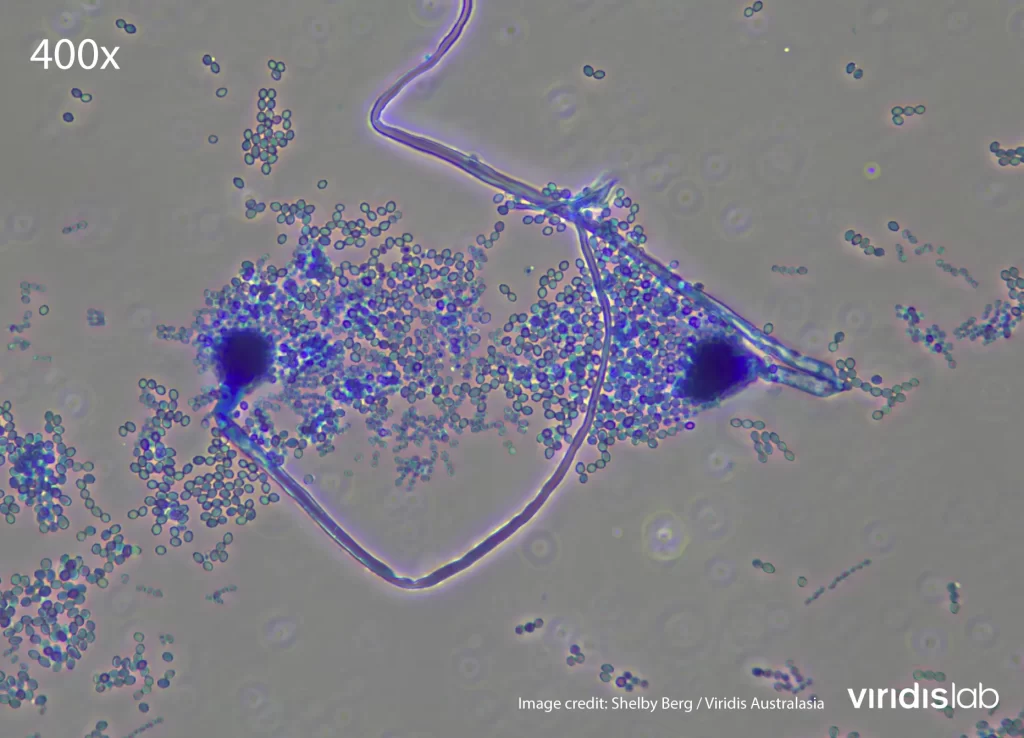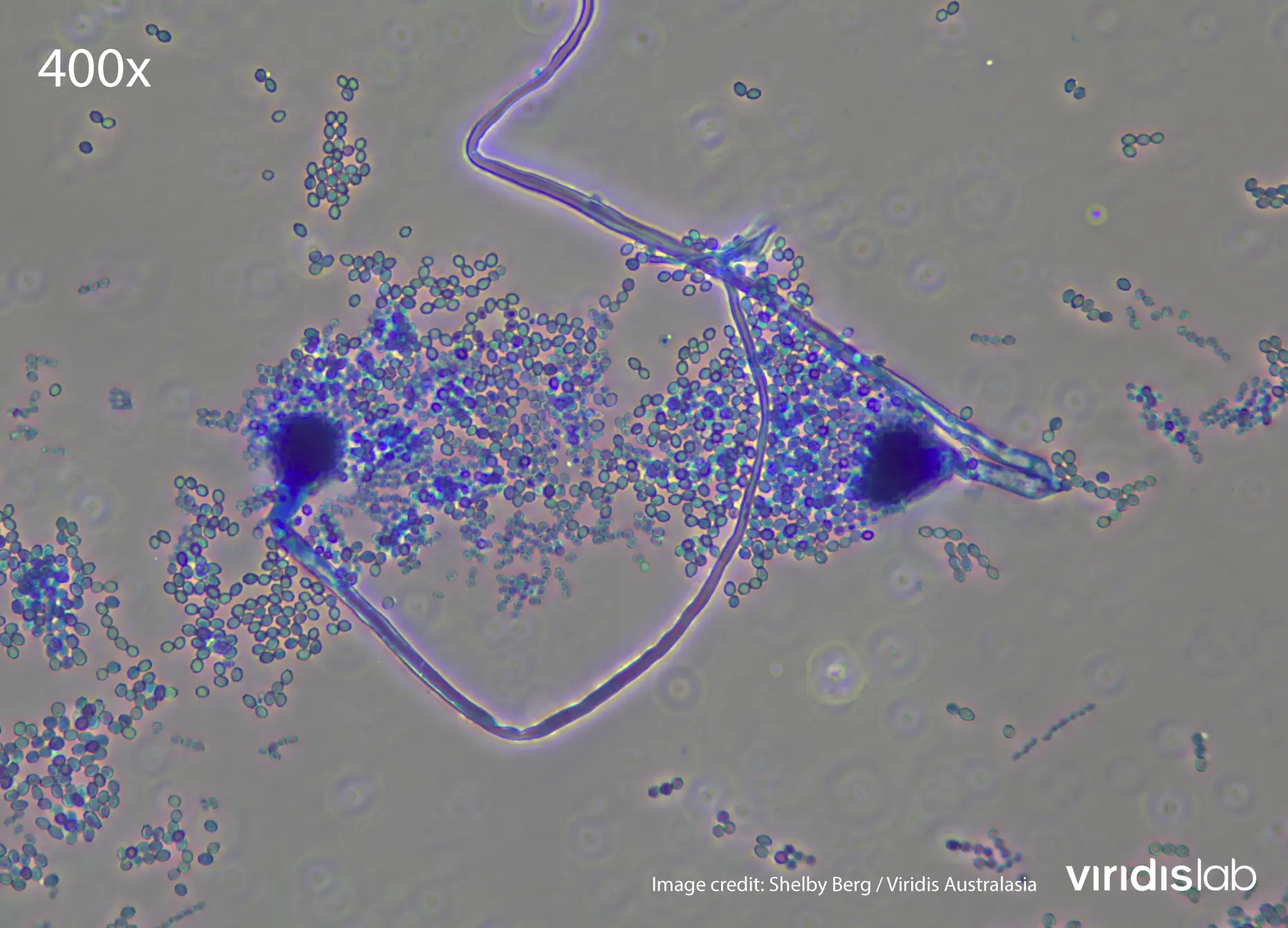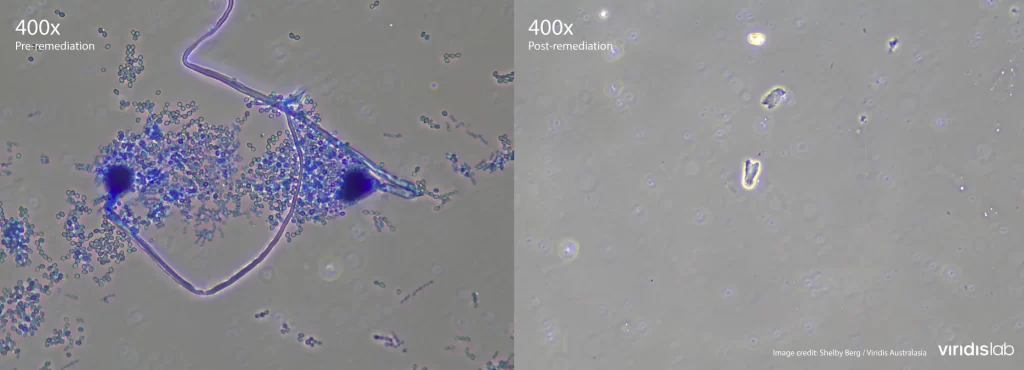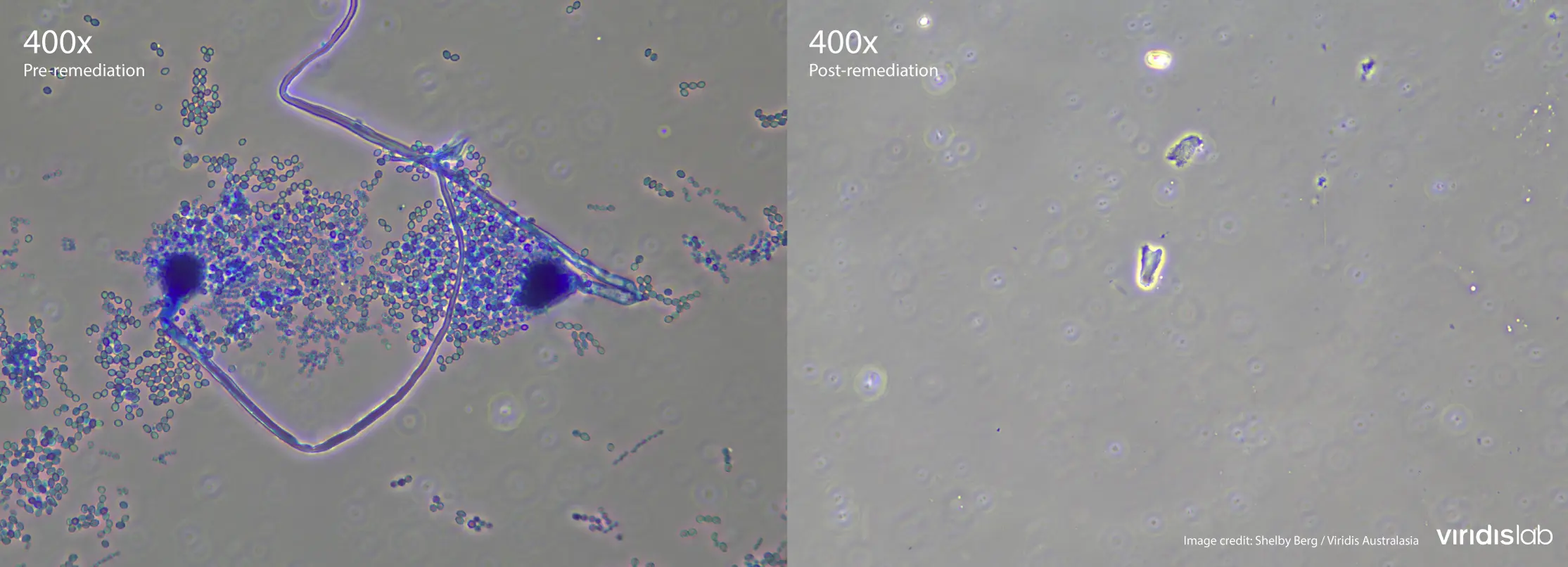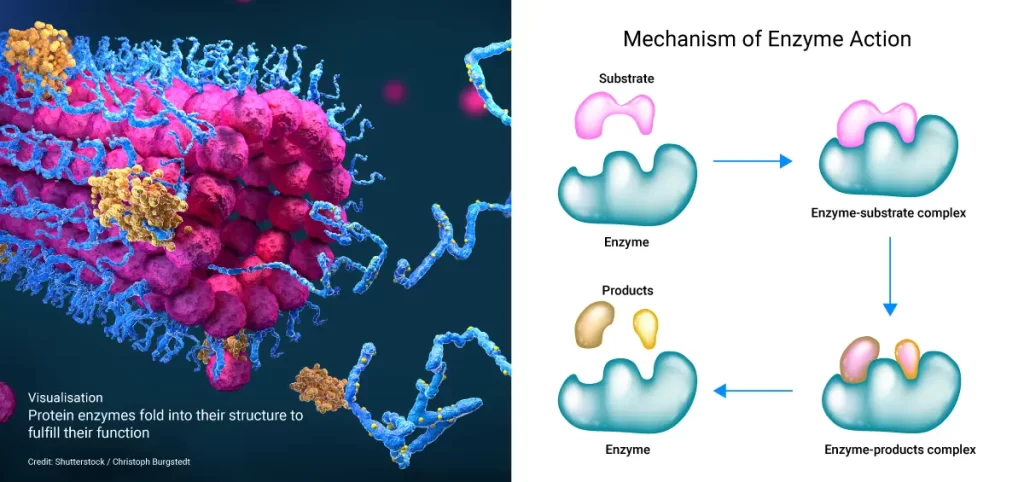Understanding Environmental Testing for Microbial Contamination
Environmental testing for microbial contamination involves a range of sampling methods designed to assess potential contaminants in indoor spaces. Depending on the situation, testing may involve air, surface, or water samples to provide a comprehensive understanding of the indoor environment's microbial health. Each method is carefully selected and executed to ensure accurate assessments, enabling targeted remediation strategies when needed.
Sampling Methods for Microbial Contamination
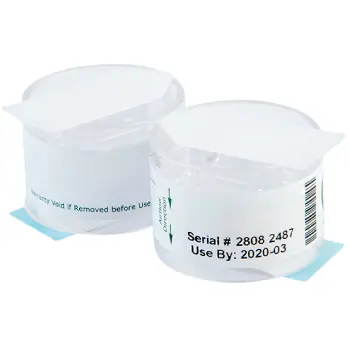
Spore Trap Cassettes – Air Samples
Specialised air sampling devices used in Indoor Air Quality (IAQ) testing to collect airborne particles such as mould spores, pollen, and dust. These cassettes use a controlled airflow system to trap contaminants on an adhesive-coated slide, which is then analysed under a microscope to assess air quality and identify potential health risks. This method is commonly applied in environmental assessments, HVAC system inspections, and remediation projects to ensure safe and breathable indoor air.
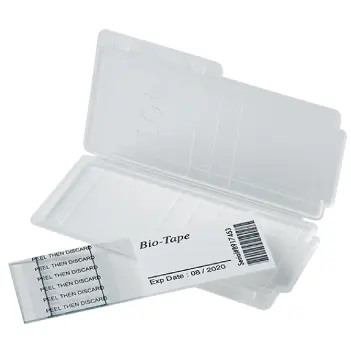
Bio-Tape Lifts – Surface Samples
Surface sampling devices used to collect and analyse settled dust, mould, and other contaminants. These adhesive slides capture particles directly from surfaces, preserving their structure for microscopic examination. Commonly used on walls, HVAC components, and other indoor surfaces, Bio-Tape slides help assess microbial growth, evaluate potential health risks, and guide remediation efforts.
Dip-Slides – Water Sampling
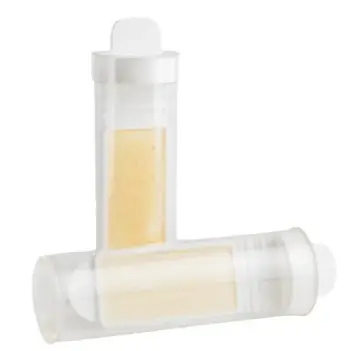
Used for microbial testing in water sources such as HVAC condensate pans, cooling towers, and humidifiers. These slides contain a nutrient-rich gel that promotes microbial growth, allowing for the detection of bacteria and fungi. After exposure to a water sample, the dip-slide is incubated and examined for colony formation, helping assess contamination levels and potential health risks.
ⓘ Microscopic analysis of Tape-Lift samples collected pre-remediation. Image credit: Shelby Berg / Viridis Australasia
Laboratory Analysis and Interpretation
Once samples have been analysed, a laboratory report details the findings. Below is an example of pre- and post-remediation images taken from a microscope at 400x magnification. The left image (pre-remediation) shows active spores, while the right image (post-remediation) demonstrates neutralised spores.
ⓘ Pre- and Post–remediation Comparison. Image credit: Shelby Berg / Viridis Australasia
Expert Commentary from Shelby Berg, Microbiologist and Laboratory Manager at Viridis
"Microscopic analysis of Tape-Lift samples collected pre- (left) and post-remediation (right). The pre-remediation sample reveals abundant Aspergillus spores and growth structures dispersed across the analysed area. Aspergillus, a common outdoor and indoor genus of mould, is a primary coloniser often associated with water damage. If left unmanaged, it can lead to structural damage and pose human health risks. In contrast, post-remediation analysis showed no detectable fungal structures, with only trace amounts of debris, including small dust particles, skin cells, and fibres. Both samples were stained with Lacto Glycerol Cotton Blue (LGCB) and imaged at 400x magnification (Berg S., ViridisLab)."
Benchmarking and Classification Methods
When analysing microbial sampling results, key benchmarking methods help assess contamination levels and potential risks:
- Debris Rating – Evaluates how much of the sample area is obstructed by debris. Excessive debris may suggest poor maintenance rather than fungal growth.
- Fungal Loading/Concentration – Refers to the density of fungal spores present. Comparing results with established benchmarks helps determine whether levels are typical or elevated.
- Fungal Diversity – A diverse fungal profile is typical in outdoor environments, while a monoculture (one dominant genus) may indicate active indoor contamination.
- Dominant Genus Identification – Determines whether prevalent mould species are common indoor/outdoor fungi, potential human pathogens, or water damage indicators.
Guidelines for Indoor Mould Levels [2]
We use classification thresholds for airborne and surface fungal levels to assess contamination severity:
- "Clean" HVAC environments: <400 fs/m³
- Potential concern: 5,000–40,000 fs/m³
- Active mould amplification: >40,000 fs/m³
fs = fungal structures
ⓘ Enumeration results are presented in fungal structures/sample (fs/sample) and fungal structures/m3 (fs/m³) for Air and fs/cm² for Surface samples
These benchmarks provide a structured approach to evaluating microbial contamination and guiding remediation efforts.
Developing a Remediation Plan
Once microbial sampling results are analysed, a structured remediation plan is developed based on contamination severity.
1. Low Contamination (Routine Maintenance & Prevention)
- Areas Affected: Localised surfaces, non-porous materials, HVAC components with minimal fungal presence.
- Containment Methods:
- HEPA vacuuming to remove spores.
- Application of approved disinfectants.
- Routine HVAC maintenance (filter replacement, coil cleaning).
- Improving ventilation and humidity control.
2. Moderate Contamination (Targeted Cleaning & Disinfection)
- Areas Affected: HVAC ductwork, high-touch surfaces, walls, ceilings.
- Containment Methods:
- Localised containment (plastic sheeting, negative air pressure).
- HEPA vacuuming followed by antimicrobial surface treatments.
- Duct cleaning with mechanical agitation and biocide application.
- Increased air exchange and dehumidification.
3. High Contamination (Full Remediation & Containment Protocols)
- Areas Affected: Large HVAC sections, water-damaged materials, porous surfaces (insulation, drywall, carpet).
- Containment Methods:
- Full isolation with air-tight barriers and HEPA-filtered negative air machines.
- Controlled demolition of irreversibly contaminated materials.
- HEPA air scrubbing and high-level disinfection.
- Fogging or misting with antimicrobial treatments.
- Post-remediation microbial sampling to confirm success.

Our 4-Step Remediation Process
We use a 4-step process to treat surfaces against microbial contaminants like mould and bacteria:
- Sanitise – Targeted sanitation removes surface-level contaminants.
- Clean – Thorough cleaning eliminates dirt, grime, and residues.
- Disinfect – Application of disinfectants neutralises harmful microorganisms.
- Protect – Application of a protective antimicrobial treatment (6–12 months short-term or permanent coating for long-term defence).
This proven method [1] ensures effective and lasting protection, making it ideal for critical indoor environments.
Advanced Cleaning Solutions
We utilise enzyme and probiotic chemistry for effective HVAC and indoor cleaning:
- Enzymes – Break down organic matter like food particles, grease, and mould.
- Probiotics – Live microorganisms that compete with harmful microbes to maintain a healthier environment.
As an Aeris Environmental Platinum Partner, we promote:
- Aeris BioShield – A probiotic cleaner that forms a protective biofilm, preventing harmful microorganism growth.
- AerisGuard Bioactive Surface Treatment – Provides up to 12 months of protection from mould and odour-causing bacteria.
ⓘ A Bio-enzymatic cleaner uses biological enzymes (molecules that speed up a chemical reaction) to effectively break down matter quickly. Filled with “good” bacteria, when sprayed onto a surface, they multiply fast and start to produce these enzymes.
Ensuring Quality Assurance and Long-Term Prevention
After remediation, final assessments confirm fungal levels are within acceptable thresholds. Long-term preventative measures include:
- Routine IAQ monitoring
- Humidity control
- Ongoing HVAC maintenance
This structured approach ensures an effective response to contamination while maintaining safe Indoor Air Quality.
For expert environmental and HVAC hygiene consulting, support with mould issues, and comprehensive Indoor Air Quality assessments, talk to our team. We provide testing, remediation, and ongoing maintenance to ensure a healthy indoor environment. Backed by NADCA and IICRC certifications, we have the expertise and competence to deliver industry-leading solutions.
References
[1] CDC: Sanitising, Cleaning, Disinfecting https://www.cdc.gov/hygiene/pdf/331782-a_cleaning_sanitizing_disinfecting_508.pdf [2] WHO Guidelines for Indoor Air Quality - Dampness and Mould. (2009). [ebook] Copenhagen: World Health Organization. Available at: http://www.euro.who.int/__data/assets/pdf_file/0017/43325/E92645.pdf?ua=1 [3] ASTM D7658-17R21, Standard Test Method for Direct Microscopy of Fungal Structures from Tape. (2021). ASTM International. West Conshohocken. PA. Available at: www.astm.org [4] ANSI/IICRC S520-2015 Standard For Professional Mold Remediation. (2015). 3rd ed. Las Vegas: Institute of Inspection, Cleaning and Restoration Certification.
Related: How Enzyme Cleaners Hold the Key to Better HVAC Hygiene
Multi-enzyme cleaners work like a lock and key—each enzyme targets a specific type of organic contaminant
Related: What is Particulate Matter (PM)?
When understanding Air Quality standards you’ll see acronyms such as PM2.5 being used. These are classifications of Particulate Matter

